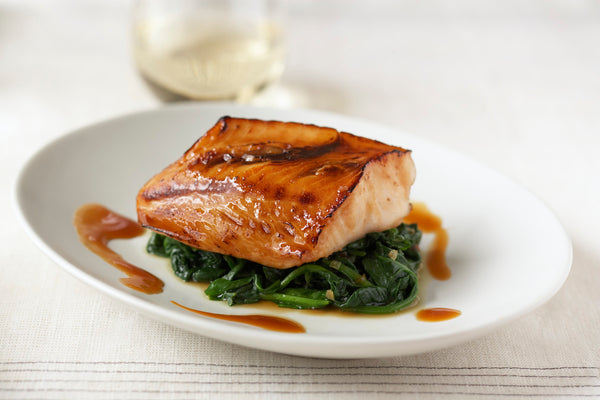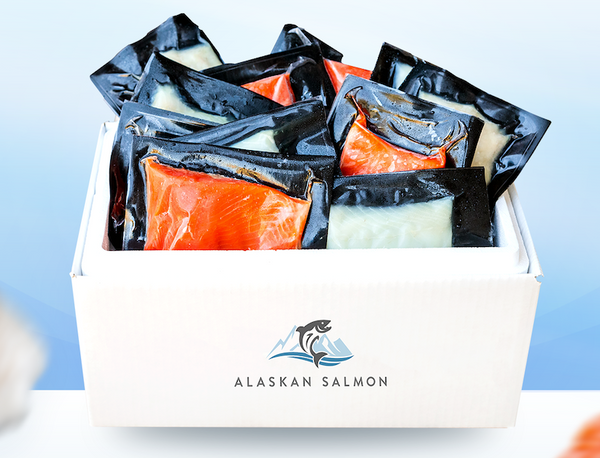
Alaskan Black Cod (Sable Fish)
Due to high demand, limited inventory is available.
2214+ ordered recently.
Product Description
6 oz filets
Indulge in the rich, buttery flavor and silky, melt-in-your-mouth texture of Alaskan Black Cod (Sablefish), sustainably harvested from Alaska’s cold, deep waters by Your Personal Fisherman, Kyle Lee. Revered by Chef Nobufor its decadent taste and versatility, black cod is perfect for grilling, broiling, or the iconic miso-marinated preparation.
With twice the omega-3 content of salmon, black cod fish is not only delicious but also a nutritional powerhouse, supporting brain function, heart health, and reducing inflammation.
✔ Expertly hand-cut & flash-frozen for maximum freshness: Each black cod fillet is meticulously hand-cut into 6 oz portions, then individually vacuum-sealed and flash-frozen immediately after harvest to lock the fresh black cods, rich flavor, and premium quality.
✔ Carefully packed & delivered to your doorstep: Your order is securely packed with dry ice in a perfectly sized, insulated box, ensuring it arrives frozen and fresh—ready for you to enjoy.
✔ Order today and savor the luxurious taste of Premium Wild Alaskan Black Cod!
FAQs About Black Cod
What does “wild-caught” cod mean?
Wild-caught cod refers to black cod fish caught directly in its natural habitats rather than being raised in a fish farm or aquaculture setting. Our black cod is 100% wild-caught giving a more natural flavor and texture than farm-raised cod.
What does “sushi-grade” cod mean?
“Sushi-grade" cod is a term given to a cod fish that shows it is safe to prepare and eat raw. Our black cod fillets are frozen to a specific temperature to kill parasites, making it safe to consume raw.
What does “sustainable” cod mean?
Sustainable cod refers to practices in both wild fisheries and aquaculture that consider the long-term health of cod populations and minimize environmental impact. The Alaska Department of Fish and Game oversees the cod fishing process, using science-based approaches to prevent overfishing and maintain balanced populations.
What are the shipping costs?
For a limited time, we are offering free shipping for all orders.
How long does shipping take?
All orders are fulfilled on Tuesdays for delivery later that same week. After receiving your order confirmation email, you will receive another notification when your order has shipped. All orders are shipped with dry ice using FedEx and UPS Overnight and 2-day shipping services.
Don't Just Take Our Word
Our customers love our seafood.

"The best salmon EVER."

"Perfect for a high protein meal."

"The skin crisps up perfectly."









